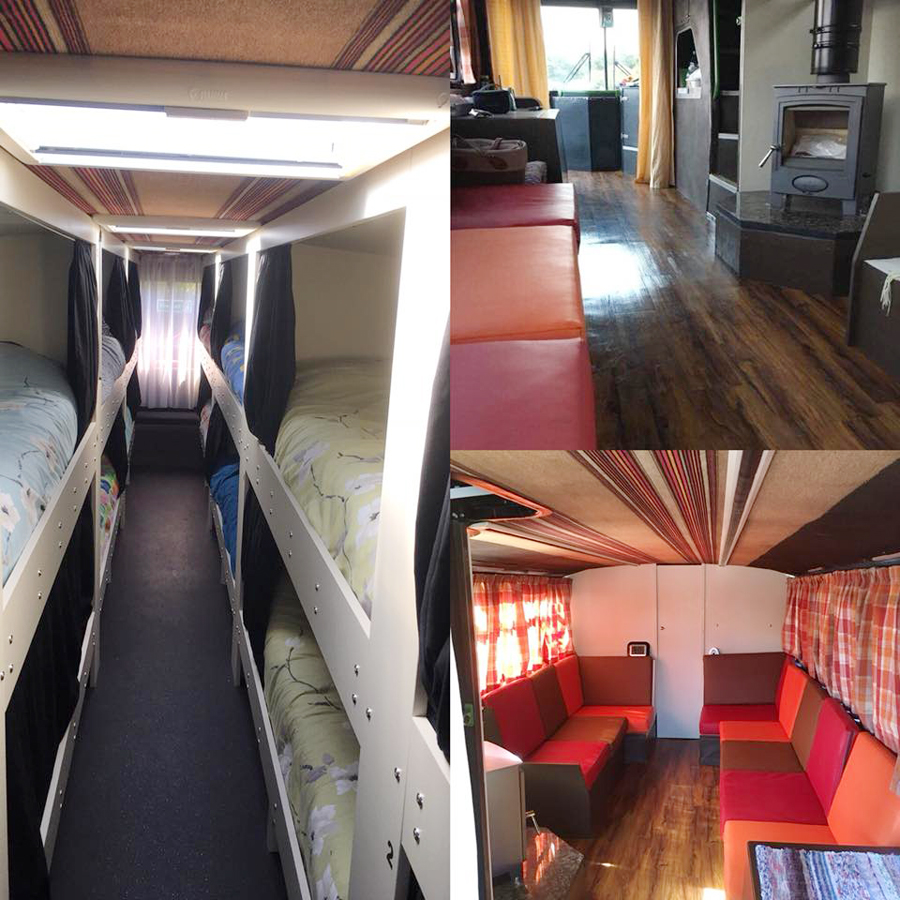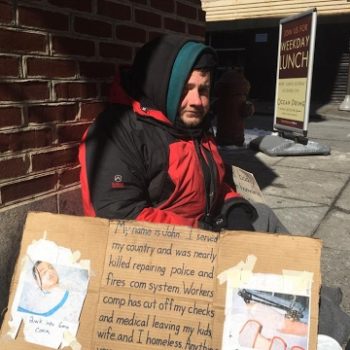Whatever statistics you believe in, both UK government and homeless nonprofits estimate triple digit increases in rough sleepers over the last few years. Traditional homeless shelters have been unable to cope but several communities around the country have found a cheap and effective solution – converting buses into homeless shelters.
Triple Digit Growth, No Matter Who You Believe
In December last year, the Independent newspaper reported that research by Heriot-Watt University for homeless charity Crisis estimated that 24,000 people are currently sleeping on the streets, tents or in cars. In England, the charity estimated that this had grown by 120% in the last five years to 22,000, though in Scotland the figure had fallen by 6%.
The UK government is relying on far more conservative statistics, showing 4,751 rough sleeping nationwide. But this has grown from 1,768 in 2010, still a 268% increase in those with nowhere to call home.
The British Medical Journal attributed this to the government’s flagship ‘Austerity’ programme. Austerity slashed budgets in welfare, social care and health to pay for the Credit Crunch in 2007. According to the article, likely causes include: “upward pressure on housing costs coupled with reduced availability of affordable social housing since the early 1980s, reduced funding for supporting vulnerable people with their housing (cut by 59% in real terms since 2010), and restrictions on housing benefit for lower income families.”
Whatever the causes, the system charged with helping the situation just five years ago was overwhelmed with demand. People had to think out of the box to even start to resolve the issue. What about repurposing buses?
The Idea Catches On
There has been no history written of the homeless bus idea, nor whom came upon it first. No one will get decorated by the Queen for coming up with the concept though many will be recognised locally in different towns and cities for their efforts.
Speaking to the Guardian newspaper, Jacqui McCluskey, director of policy and communications at umbrella group, Homeless Link, said bus shelters “are examples of how communities can come together to help vulnerable people, addressing a gap in the support available, and providing an initial opportunity to engage with people who are homeless or sleeping rough”.
In many cases, this started with either the discovery of an abandoned bus or negotiations with private public transport companies to have buses that would otherwise be destined for scrap donated to them. On January 28 this year, the largest such donation was made. London-based Buses 4 Homeless announced “The incredible people at StagecoachGroup and the Stage Coach Community Fund have just donated an entire set of buses worth £20,000 to our Buses 4 Homeless project.” While the largest donation to date, several other buses are in operation.
In January 2018, the Bus Shelter Dorset was given planning permission by the local council to park the bus on a site just back from Weymouth’s famous beach. This is a double decker bus that has been converted to sleep 17 (14 men and 3 women). The space outside has toilets, washing facilities and a socialising space.
A Tough Choice
Another provision has sprung up right across the UK.
One limitation is that many rough sleepers are forced to leave their dogs and other companion animals outside or abandon them altogether. This issue often keeps them from seeking nights indoors in night shelters. The companion animals give them unquestioning love and are often the only beings that they believe they can fully count on.
To that extent, The Colchester Rough Sleepers Group bus “includes a number of dog crates for the dogs of the homeless people and rough sleepers who do not want to part with their canine pals – an issue which can be a barrier to indoor overnight stays elsewhere”, according to the local Gazette News newspaper. An anonymous donor recently gave around $30,000 to help the project get off the ground.
Complex Solutions for Complex Issues
In a social democratic country like the UK, it doesn’t just take a “heartless government” to put someone on the streets, no matter how hard Austerity policies affect the most vulnerable. To be homeless in the first place, there is quite a fall from grace required.
Unemployment, mental health problems, drug and alcohol problems as well as welfare benefits and financial problems all contribute to a perfect storm that forces the victim through every safety net and onto the streets. None are easily resolved. This is why simply giving someone somewhere to sleep isn’t the solution that many of these charities undertake.
UK veterans homeless charity Buses 4 Homeless describe the program that each of their clients engages in as soon as they are taken aboard the bus. Over three months, the nonprofit works to:
- Overcome the issues that lead to them being homeless
- Teach them Soft and Vocational skills
- Engage them into Apprenticeships /Further Training
- Help secure Jobs /create Businesses
- Re-engage them back into the community and rehouse them
Such programs aren’t putting a Band-Aid on a gaping wound. Rather, these programs are giving the complete treatment plan to re-engage individuals with society. This will enable them to have somewhere to live permanently.
Key Lessons
The homeless bus idea is something that can be replicated everywhere with a public transportation system. It has been tried in Australia, and could be rolled out to the US. In many cases, the bus company will have to pay to dispose of their vehicles. Donating to a community organisation instead could be a good way of reducing costs to the business. That’s a good negotiating position to begin with.
Converting the buses is often the biggest expense. Looking through the projects in the UK, this has cost between $30,000 and $40,000 per unit. This is still considerably cheaper than real estate to house a similar number of people. Running costs need to be worked out as well, such as fuel, staffing, food and insurance.
Most bus charities have worked with their local councils to find a permanent place to park. This avoids clashes with residents and neighbours and allows for good community relations to be built from the start.
The Future?
The best answer for all rough sleepers would be a massive social housing construction program. This includes an investment in currently underfunded health and social care systems that let them down. That would require a political upheaval unseen since the Great Depression of the 1930s. For now the solution needs to be philanthropic. As philanthropic enterprises go, the bus shelter idea is cheap and effective if properly carried out.
If you’d like to support the Bus Shelter Dorset, please visit justgiving.com/thebusshelterdorset.














